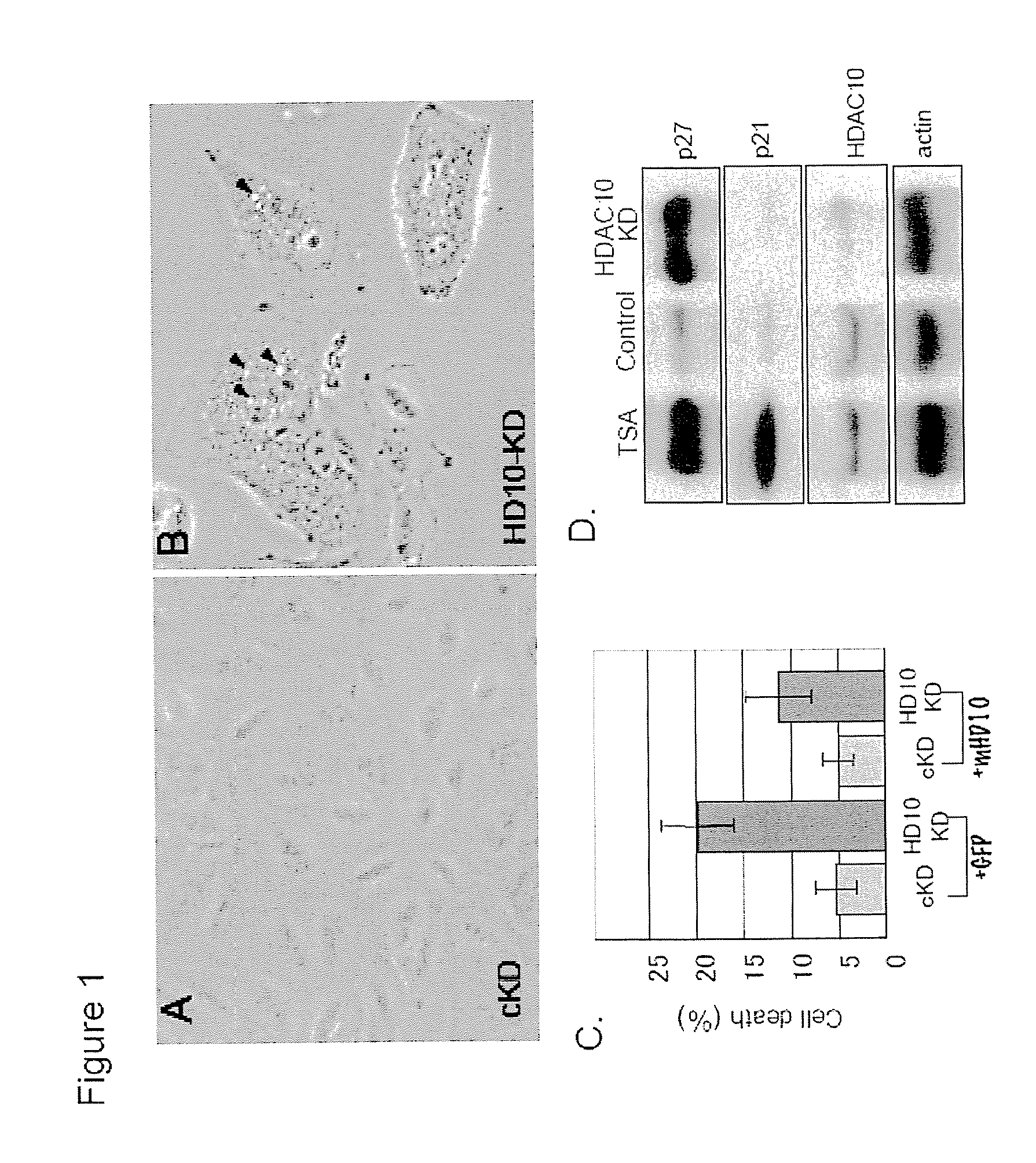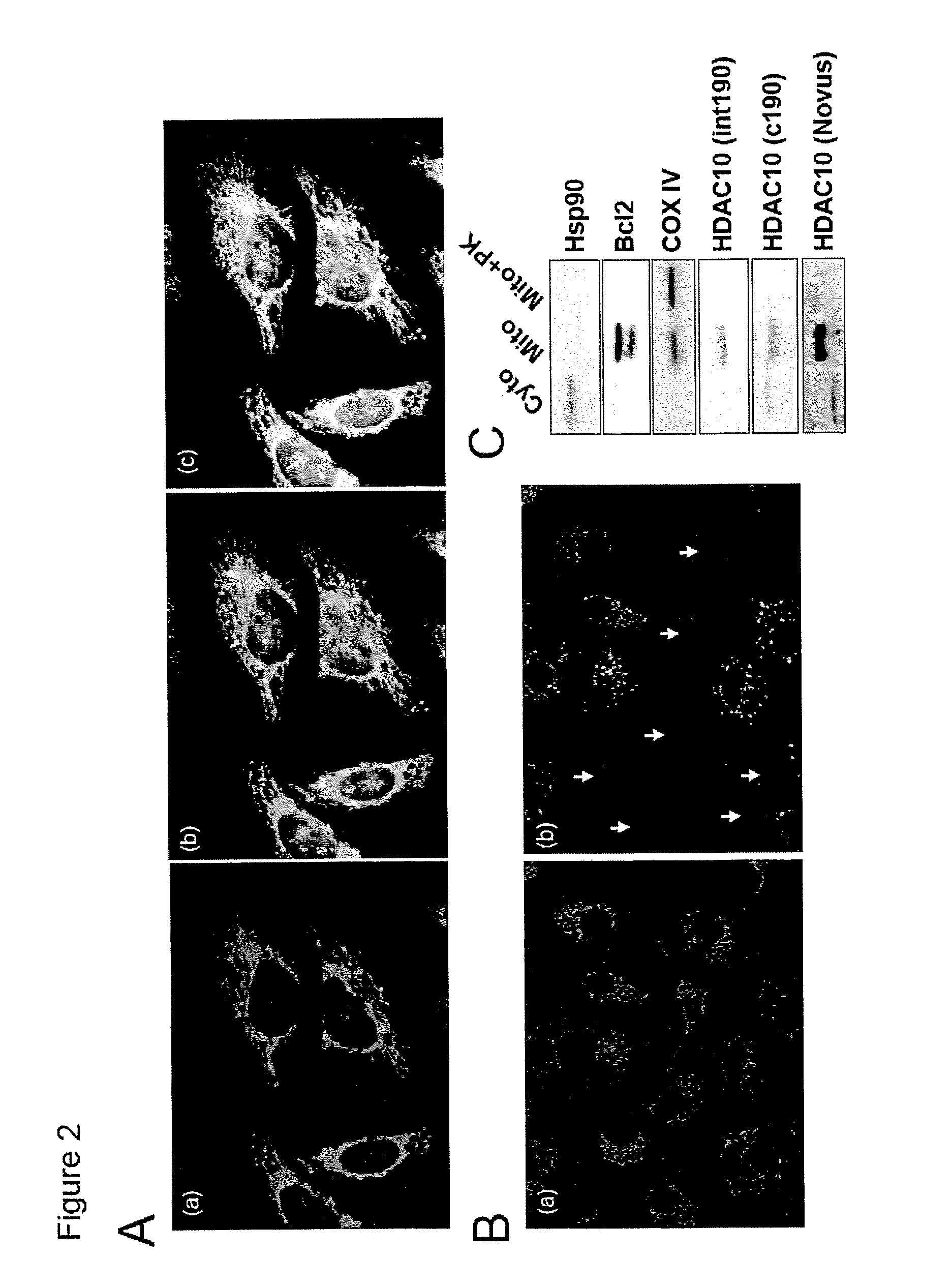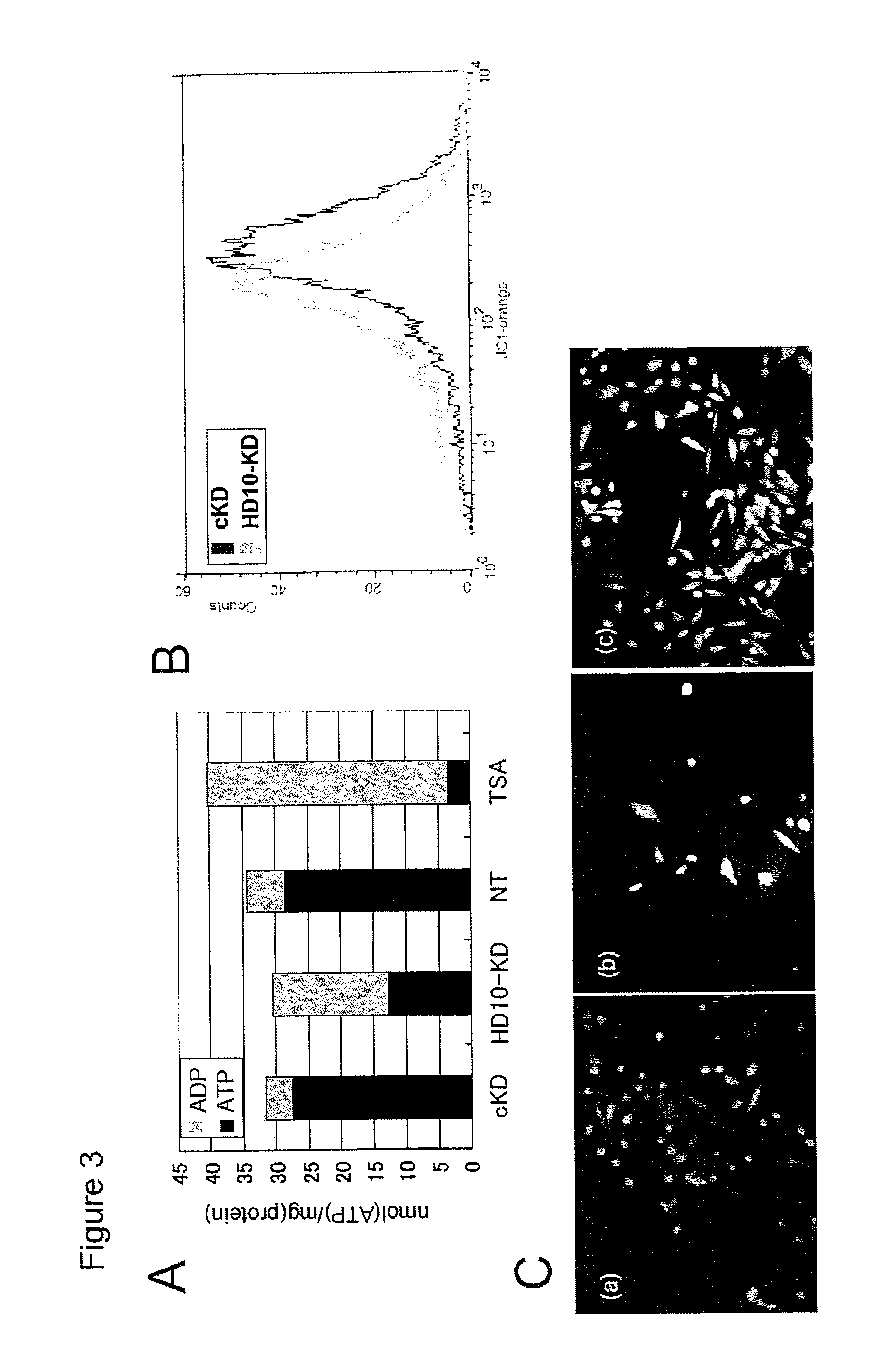Methods and compositions for regulating hdac6 activity
a technology of hdac6 activity and composition, applied in the direction of biochemical apparatus and processes, cyclic peptide ingredients, biocide, etc., can solve the problem that the critical question of whether and how hsp90 is regulated in these processes is poorly understood
- Summary
- Abstract
- Description
- Claims
- Application Information
AI Technical Summary
Benefits of technology
Problems solved by technology
Method used
Image
Examples
example 1
HDAC6 Regulates Hsp90 Acetylation and Chaperone-Dependent Activation of Glucocorticoid Receptor
[0054]Cell lines. A549 and NIH-3T3 cell lines overexpressing HDAC6 wild type, ΔBUZ or catalytically inactive mutants were established using retroviral infection. A549 and 293T cells stably expressing siRNA for HDAC6 were established as described previously (Kawaguchi et al., 2003).
[0055]Antibodies. Rabbit polyclonal HDAC6 antibody DU227 was raised against a C-terminal HDAC6 peptide as described previously (Hubbert et al., 2002). The production of antibodies for acetylated lysine (Komatsu et al., 2003), Hsp90 (H1090) and p23 (JJ3) has been described (Johnson and Toft, 1994). GR antibody was purchased from Cell Signaling. S-14 antibody recognizing HDAC6 was purchased from Santa Cruz.
[0056]Immunoprecipitation and immunostaining. Cells were lysed as described previously (Hubbert et al., 2002). Hsp90 antibody was pre-incubated with rabbit-anti-mouse (Jackson Labs) and Protein-A Sepharose beads ...
example ii
Regulation of the Dynamics of Hsp90 Action on the Glucocorticoid Receptor by Acetylation / Deacetylation of the Chaperone
[0067]Untreated rabbit reticulocyte lysate was purchased from Green Hectares (Oregon, Wis.). [6,7-3H]Dexamethasone (40 Ci / mmol), [ring-3,5-3H] chloramphenicol (38 Ci / mmol), and 125I-conjugated goat anti-mouse and goat anti-rabbit IgGs were obtained from Perkin Elmer Life Sciences (Boston, Mass.). Protein A-Sepharose, non-radioactive dexamethasone, trichostatin A, goat anti-mouse and goat anti-rabbit horseradish peroxidase-conjugated antibodies, and M2 monoclonal anti-FLAG IgG were from Sigma. Dulbecco's modified Eagle's medium was from Bio-Whittaker (Walkersville, Md.). The BuGR2 monoclonal IgG used to immunoblot the mouse GR, and the rabbit polyclonal antibody used to immunoblot human GR were from Affinity Bioreagents (Golden, Colo.). The AC88 monoclonal IgG used to immunoblot hsp90 was from StressGen Biotechnologies (Victoria, BC, Canada). The JJ3 monoclonal IgG u...
example iii
HDAC6 Regulates Hsp90 Client Proteins Raf-1 (C-Raf) and B-Raf
[0089]Raf kinase family member Raf-1 (C-Raf) and B-Raf are oncogenes in human cancer and both are Hsp90 client proteins critical for cell proliferation. Inactivation of Hsp90 results in the degradation of Raf-1 and B-Raf. This study shows that Raf-1 and B-Raf protein levels are reduced in cells deficient in HDAC6.
[0090]Mouse embryonic fibroblasts (MEF) derived from wild type (WT) or HDAC6 mutant embryo (KO) were analyzed for B-Raf and Raf-1 protein levels by specific antibodies. Both B-Raf and Raf-1 protein levels were observed to be down in HDAC6 deficient cells. In HDAC6 deficient mouse embryo fibroblasts, Raf-1 and B-Raf protein levels are both reduced compared to those in wild type cells.
[0091]Raf-1 and B-Raf protein levels can be restored to near wild type by re-constituting the HDAC6 deficient cells with a wild type HDAC6. Ectopically expressed HDAC6 restores B-Raf and Raf-1 protein levels in HDAC6 deficient cells. H...
PUM
| Property | Measurement | Unit |
|---|---|---|
| pH | aaaaa | aaaaa |
| pH | aaaaa | aaaaa |
| pH | aaaaa | aaaaa |
Abstract
Description
Claims
Application Information
 Login to View More
Login to View More - R&D
- Intellectual Property
- Life Sciences
- Materials
- Tech Scout
- Unparalleled Data Quality
- Higher Quality Content
- 60% Fewer Hallucinations
Browse by: Latest US Patents, China's latest patents, Technical Efficacy Thesaurus, Application Domain, Technology Topic, Popular Technical Reports.
© 2025 PatSnap. All rights reserved.Legal|Privacy policy|Modern Slavery Act Transparency Statement|Sitemap|About US| Contact US: help@patsnap.com



